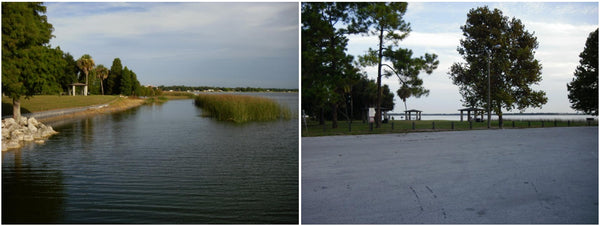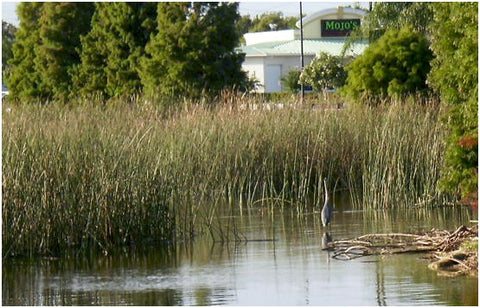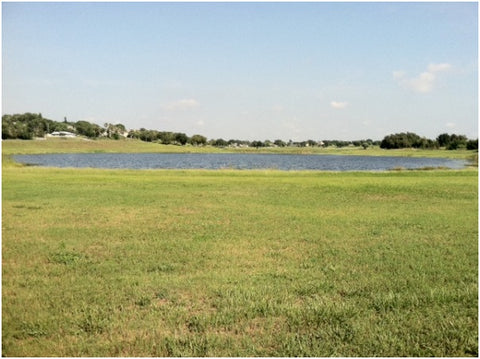2020-09-23 Fly Fishing Report
by T. Allen Wyatt
Report is: Good
Surface Temp is about 79
Weedless Poppers, Dragon Fly Patterns, and Baby Batifish patterns
Fly Tying Club returns, first and third Tuesdays at 6pm in October. Because of Social Distancing, Seating is very limited.

Fast retrieve baitfish and streamers will create reaction strikes. Deep is the key; we suggest Clouser Deep Minnows-White, Sexy Shad, Baby Bluegill and Chartreuse are good colors. For Larger bass-cast 10 to 30 feet out from the traditional structure. Count the fly down 10 seconds for depth. Then use a moderate retrieve to swim the clouser. Crayfish patterns in Blue/Black or Olive/Pumpkin should be fished be fished on the bottom with a slow crawl retrieve. Buck Bass are focused on grass lines and shoreline. Weedless poppers and frog patterns will be productive in grass and lilies. Use a heavy leader with a fly w/weedguard to prevent getting hung. The panfish will be found in shallow water, hanging around lily pads and cattails. Small foam spider with rubber legs, trailing a beaded pheasant tail or rainbow warrior-only a slow twitch. Five minutes of extra slow retrieve is normal for this technique. It is easy fishing that will drive Bluegill nuts.
With continued heat and afternoon storms, we expect deep clouser methods to produce. Pheasant tail nymphs, squirmy worms, and dragonfly nymphs are perfect for bluegill fishing subsurface. Small foam spiders and dragonfly dries will tempt the bluegill and bass on the surface. Searching for shadows, close to woody structure are key in the afternoon. Rivers provide an excellent shelter on those windy or crowded days; however, storms have dramatically raised rivers, and we recommend shore casting only.
Best techniques for the week include Technique 1) Fish Clousers deep, cast and count them down (5 to 10 seconds) then use a steady retrieve to generate a reaction strike. Try counting down 5 sec, then 6 sec, then 7 sec... Add a Sink Tip or a new Sink polyleaders to your line, and you can fish deeper and faster. These tools can double the depth of a clouser. A Fluorocarbon (Mirage) leaders, this will get the fly down faster than a mono leader. Sink tip lines and full sinking lines take this to a new level, (and are a perfect use for that old rod you never use anymore.) Technique 2) Poppers (with rubber legs,) fished slowly during low light conditions, and even during the day under shady over hang and around docks. Technique 3)Heavy rain creates flowing water, Largemouth bass will flip into Ambush mode. Struggling Baby Bass, Baby Bluegill, and Baby Tilapia, and Golden Shiners are targets. Swing Puglisi style baitfish and wooly buggers in the current. These places include: canals, culverts, and/or drain pipes. 4)Rubber legged spiders above or Wilson's bully spider below the surface for Bluegill. Move slow. They will be next to solid structure like metal sea walls, dock pilings, or knock down cypress.
A Crappie Time of Year!
Spec and Crappie Fishing Article and photos by Walt Palen (shallowfly walt), all rights reserved. This article was re-published from our old blog site.
Summer has officially passed. You can’t tell by the weather here in Florida this year, but Fall and Winter are upon us. When the water temps go down certain fish become easier to catch and fresh water crappie/specks is one of them.
Black crappie (also called specks) is what we find in our part of Florida; they are a pan fish with a dark gray/ greenish back, and silvery to white sides that are marked with many spots and wavy, broken lines. These fish are fun to catch, make outstanding table fare, average just under a pound, and are commonly found weighing one to two pounds.

Crappie spawn the same time as large mouth bass and feed in a similar way. When a cold front approaches they feed heavily and when it passes they develop lock jaw. In-between those times it is just a great bite. From fall through Spring, finding structure, correct depth and lure color is key. Now, good old fashioned Missouri minnows from the local bait shop under a bobber set at different depths on a cane pole will always get the bites, but for me it’s a tiny artificial on a micro light spinning rod or my 3 wt fly rod.

Recently, I was invited to join some fellow kayakers at a local residential lake. Crappie fishing is casual fun fishing so we met at 9:00AM and unloaded the kayaks off the bank and immediately started fishing the shoreline. Because of the higher winds I chose light spinning gear with 10 pound braid and 10 pound fluorocarbon leader. Artificials can include tiny lead head jigs with a variety of tail styles and colors, in-line spinners like road runners, and micro crank baits like tiny rattle traps. If the long rod is your choice, small streamers like a #6 chartreuse and white Clouser with some flash is a great choice because specks are fish eaters.

Now, I mostly think that all of those pretty colors on the lures are more for the fisher than the fish, but with crappie I have to say that bringing along and trying different colors may be the key to your success; chartreuse, orange, red, white, yellow, black, green, and combinations of such are all great choices.
I started with red and white tube jigs that I have done well with in the past, but this time I only caught blue gill and no specks. I changed to a white head, white twisty tail jig (the ones you commonly find in the multi pack plastic) and finally started to catch some specks. Specks are school fish so after I caught my first one I anchored out far enough so that I could just make the cast land at the edge of the branches overhanging the water. I let the jig sink, then retrieved it very slowly, and wham I had a speck on the line. I would target shaded areas, overhanging branches, open root areas, and island points where the wind would create a nice current flow and eddy that would funnel the bait to the fish. No fancy tricks, the same places you would target bass but with much smaller baits and equipment you can find specks.

I changed to a jig that I tied with a light green head and a matching marabou tail, then again to a black with dark green tail and continued with reasonable success. I then changed my retrieve by letting it sink, then bouncing it up in the water column with upward twitches of the rod as specks will hover in the water column at different depths. This seemed to do the trick and the bite went off the hook; I even managed to catch some bass throughout the day.

So all in all, change is good, and specks/crappie are a great deal of outdoor fun for all ages. These great eating pan fish provide a much better catch rate per hour than most fish, and will provide you and your family or friends a great time and adventure. You can use the methods explained above in the mornings and evenings in most lakes, ponds, and pits that have deeper sloping sides. They are prolific reproducers so taking some home for dinner wont effect your next visit.
Live life by the minute and get outdoors and have some fun!
Walt Palen is an on-going contributor to our blog. He is an avid fly fisherman, kayaker, and tournament fisherman and is also known on Facebook and forums as Shallow Fly Walt.
Waterproof Fly Box Review
The interior of the box is well thought out. The box uses a micro slit foam format, which enables an angler to keep... View full article →First-Time Fly Fishing from a Boat
The astute fly caster can use any boat as a fishing platform with a little foresight and preparation. Not all boats have been designed with fly fishers in mind. If you will be fishing from someone else's boat you need to carry View full article →Heaving Hackle at Baby Tarpon
The little guys (we're talking Tarpon under 20 pounds here) will show up in lots of places. The popular spots are well-known, and the fish are hard to catch there...Sweat equity, as always, will lead you on some wild goose chases but will lead you to some remarkable fishing. A willingness to explore helps, as does a kayak or canoe. View full article →The real reason to fly fish is the fun of it all
On a family outing to North Carolina, I found myself in the lucky position of teaching my son to cast a fly rod from the middle of the Nantahala River. View full article →Fly Fishing Bartow | Mary Holland Park
This lake has dark water of moderate depth. There is some aquatic vegetation, but if you are careful, a weed guard is not a necessity. There is some shore line vegetation, but fly casting is no problem. View full article →Fly Fishing Lakeland | Saddle Creek
This may be the easiest place to Fly Fish for Bass from the bank in Florida. Fishing is the prime activity at this large park, though hiking trails, boating, bird watching, canoeing & kayaking, and camping are available. The park is easy to find and extensive shore line calls out for fly fishing. View full article →Fly Fishing Lakeland | Lake Parker at Sertoma Park
FLY FISHING FOR BASS is a great activity in Lakeland, Florida. Surrounded by a highway and a power plant, Sertoma Park offers fly fishers a surprisingly good outing. This fishery is easy to get to.

At the south end of Lake Parker, hard by highway 92, near Taco Bell and Mojo’s Restaurant, nature co-exists with urban development nicely. Heron work the shore, diving Ospreys point the way to fish, and our Big Swimming Lizards are ever present. Wading is not recommended here.

- Sertoma Park has approximately seventy yards of shoreline, with clear water, welcoming the fly caster.
- The shallow water on the shore is fronted by reeds.
- In addition, the dock of the concrete boat ramp provides access to deeper, tannic water.
- Kayak fishing is a good way to reach the other side of the reeds.
TO FLY FISH FOR BASS at Sertoma Park; a thirty to forty foot cast is all that is required. A 4 weight fly rod with a floating line will do well here. Try a small bass popper, or a slidder. From the dock, the water becomes cloudier and deeper. Tie on a flashy, sinking fly like a Clouser or a EP Minnow.

LAKE PARKER offers several other opportunities to fish. Check out our web site for future articles.
Photos and Articles By Chris O'Byrne, Director of Fly Fishing Schools
Fly Fishing Dundee | Lake Marie

Central Florida Fly Fishing for Bass. Just a couple miles off the busy Highway 27 in the town of Dundee is a central Florida gem for the shorebound angler. Lake Marie and the park that encompasses it provides hundreds of yards of wide open shoreline great for the fly caster. With the low water the lake is actually split and provides two different bodies of water to fish. Walking the shoreline you can search for fish busting the surface of the water and make an accurate cast to catch panfish and Largemouth Bass.

With the shallow gradually sloping shoreline topwater patterns are going to be your most successful fly. During the heat of summer this means fishing earlier in the day and then again in the evening will be your most productive times to fish.
Although you don't need waders, knee-high boots or hip waders can give you a great advantage to get past the 10-15 feet of uncut grass along the shoreline and closer to the fish.
A stripping basket is a great tool and will make you shoreline stalking much more enjoyable and successful.
Parking access can be found at the small park on the north side of the lake. There is a small playground, picnic tables, and a restroom. You can also park at the very south end of the south lake in the grassy parking lot off the dirt road. Either way a nice paved walking path provides an easy way to walk around the entire lake.
There is access for kayaks and canoes from both the north and south end of the lake. This would provide a great way to work some of the deeper water and target schooling bass in the fall and spring.
To get to the park from Highway 27 turn East on Dundee Road (542) and follow the road 1.4 miles. The road will fork. Where the road forks it forms the northern parking lot and access. If you head right at the fork you can see the entire lake to your left and pull off on the dirt road at the very south end and park in the grassy lot there. Interactive Google Map below
Article by Craig Crumbliss, Author, Teacher, World class Angler
